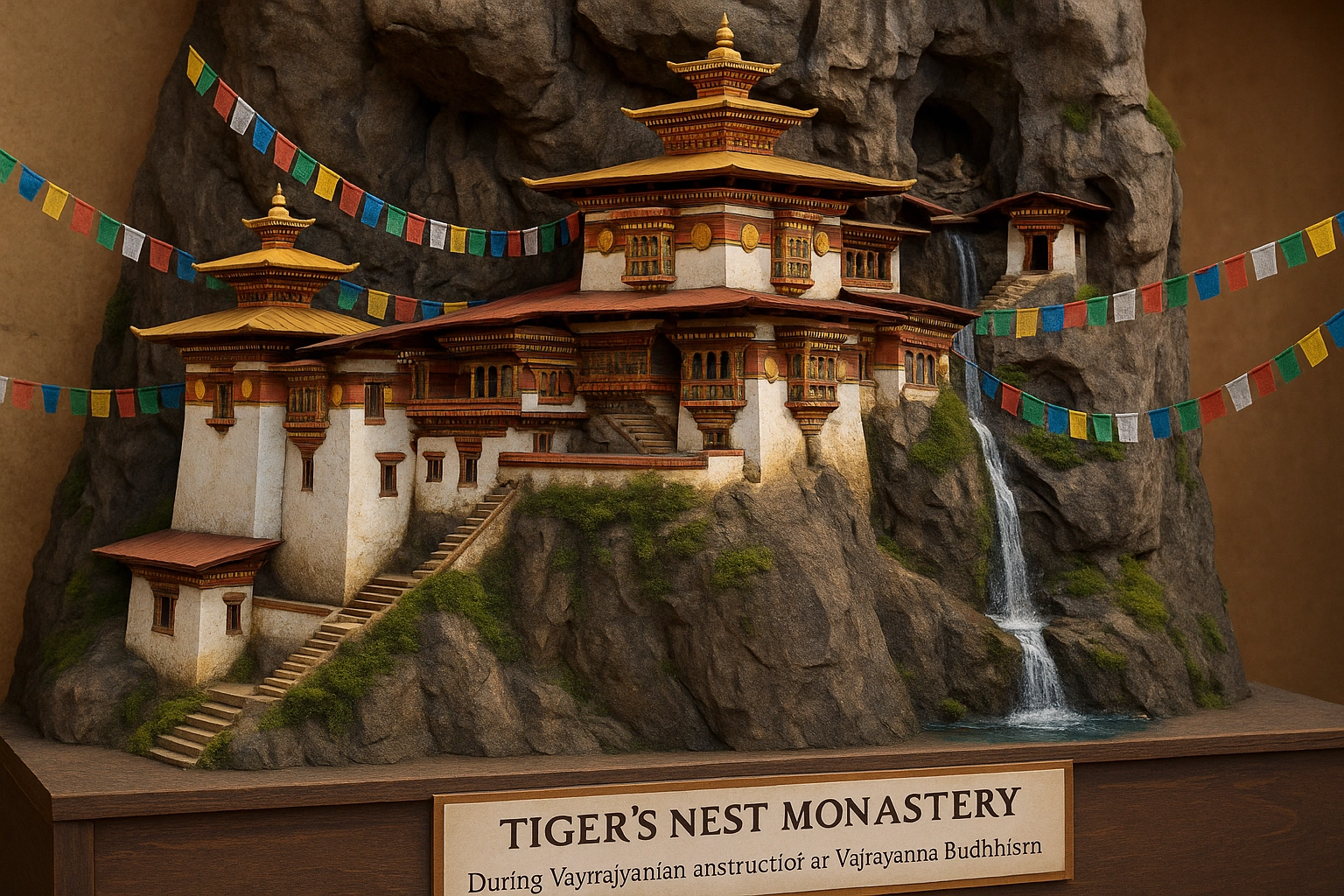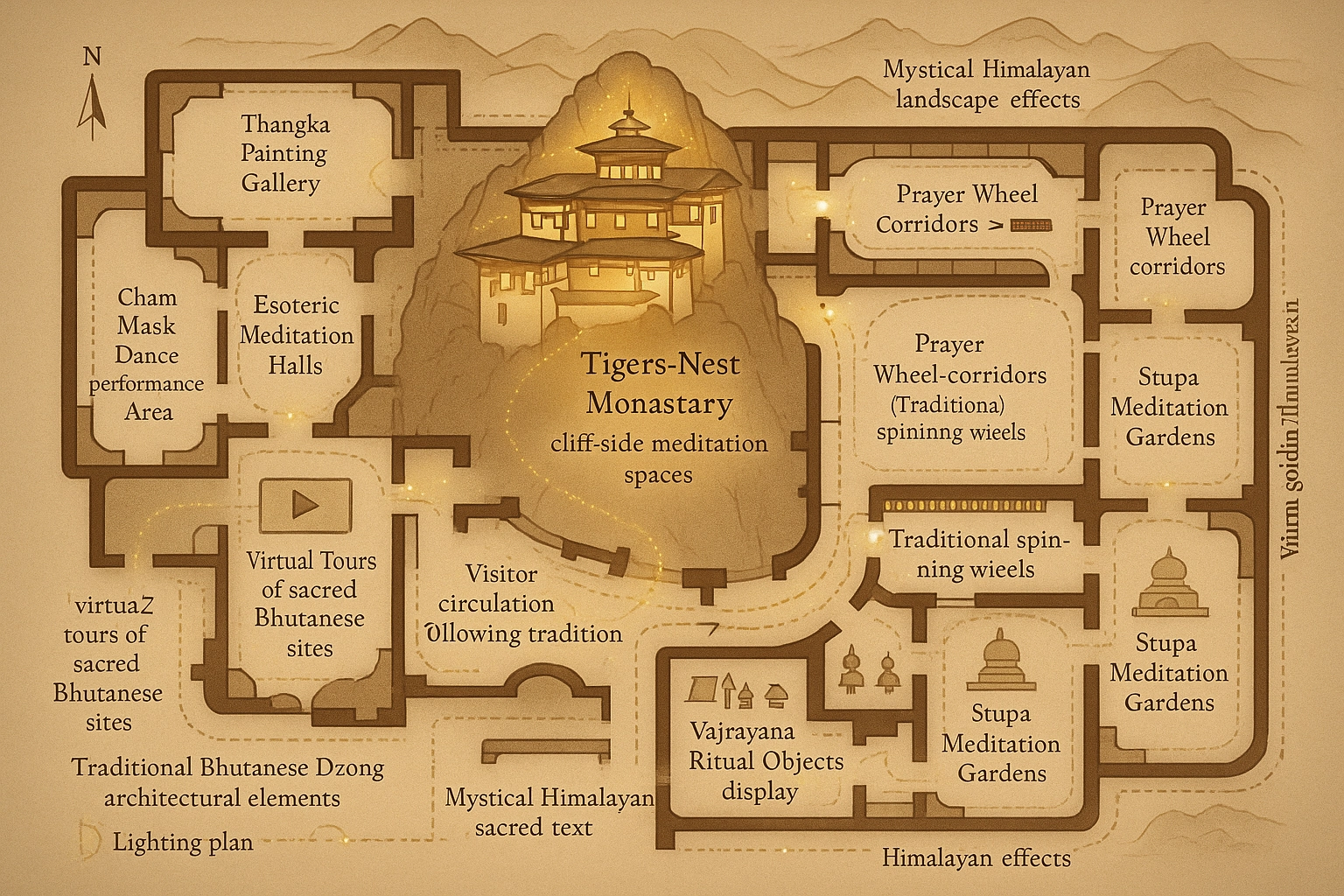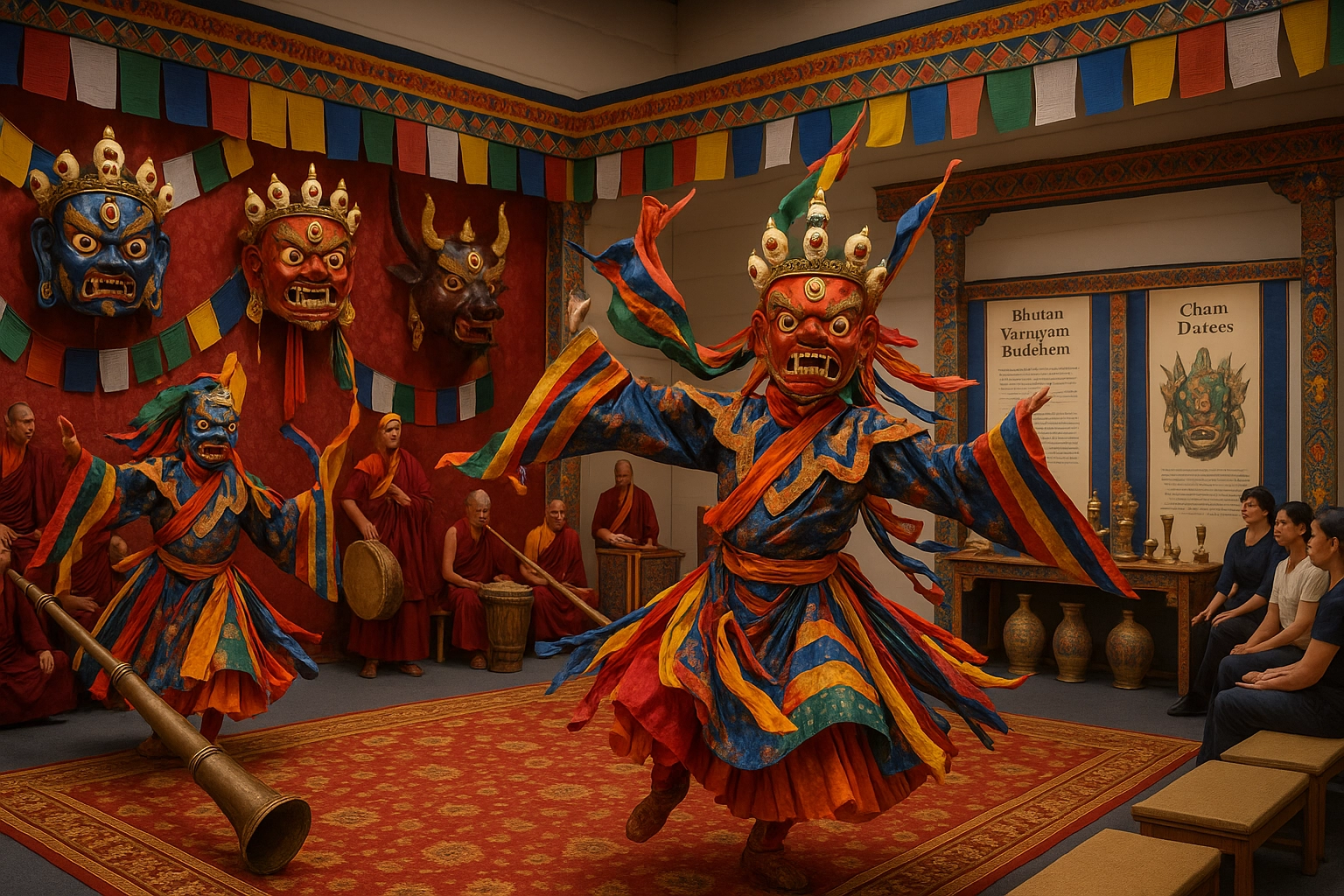Bhutan: Vajrayana Buddhism Exhibition
The Living Path of Tantric Wisdom and Himalayan Harmony - Explore the profound spiritual tradition that guides the Last Shangri-La
Exhibition Layout & Sacred Spaces

Tiger's Nest Monastery
Sacred pilgrimage site where Guru Rinpoche meditated, perched dramatically on cliff face

Mandala Meditation Hall
Interactive space featuring cosmic diagrams and visualization practices

Dzong Fortress Display
Architectural models of fortress-monasteries representing the dual system of governance
Historical Roots & Origins
Vajrayana Buddhism in Bhutan originates from the 8th century, when the legendary Indian Buddhist master Guru Padmasambhava (Guru Rinpoche) arrived in the Himalayas. He subdued local spirits, introduced tantric teachings, and founded sacred sites, including the iconic Tiger's Nest Monastery.
Emergence & Development
Following Guru Rinpoche's transmission, monastic institutions were established and sacred texts translated. The unique Bhutanese tradition crystallized through Zhabdrung Ngawang Namgyal (17th c.), who founded the dual system (Chösi Nyidhen)—integrating spiritual and temporal rule in fortress-monasteries.
Key Spiritual Leaders
Guru Padmasambhava
The "Second Buddha" and founder of Vajrayana Buddhism in Bhutan.
Zhabdrung Ngawang Namgyal
Unifier of Bhutan and founder of the dual spiritual-temporal system.
Pema Lingpa
Great tertön (treasure revealer) and lineage holder of tantric teachings.
Core Concepts & Beliefs
Vajra (Dorje)
Symbol of indestructible wisdom and compassion, uniting method and insight.
Tantra (Gyü)
Advanced spiritual path using meditation, deity visualization, and ritual.
Deity Yoga
Visualization practices connecting with enlightened qualities of Buddhas.
Guru Devotion
Centrality of the teacher-disciple bond in spiritual transformation.
Fundamental Principles
Non-duality
Unity of wisdom and compassion, transcending apparent opposites.
Interdependence
Recognition that all phenomena arise through interconnection.
Sacred Outlook
Seeing all aspects of life as pure and worthy of respect.
Gross National Happiness
Buddhist values prioritizing well-being and harmony with nature.
Sacred Symbols
Vajra (Dorje) & Bell
Paired ritual implements symbolizing wisdom and skillful means.
Mandala
Cosmic diagram representing the universe and stages of enlightenment.
Thangka Paintings
Sacred art depicting deities, protectors, and lineages.
Prayer Flags
Five-colored flags spreading blessings and compassion to all beings.
Major Rituals & Ceremonies
Cham Mask Dance
Sacred ritual dances performed at Tsechu festivals to invoke deities.
Tantric Empowerments
Initiations granting permission to engage in advanced practices.
Mandala Offerings
Symbolic offering of the entire universe in devotion and generosity.
Butter Lamp Offering
Lighting lamps for the benefit of the living and deceased.
Global Influence & Cultural Impact
Unique Governance Model
Bhutan stands as a rare example of a nation guided by Buddhist values at every level, integrating spiritual wisdom into governance through Gross National Happiness philosophy.
Cultural Preservation
Vajrayana Buddhism shapes Bhutan's festivals, art, music, and everyday life. Public festivals (Tsechu) and sacred arts affirm its central role in Bhutanese identity.
Environmental Harmony
Buddhist principles inform policies that safeguard cultural heritage, promote ecological sustainability, and cultivate collective well-being throughout the Himalayas.
Notable Texts & Scriptures
Kangyur and Tengyur
Canonical collections of Buddha's teachings and commentaries
Termas
"Revealed treasures" - hidden texts rediscovered by tertöns
Guru Rinpoche's Biographies
Hagiographies and teaching cycles central to Bhutanese practice
Tantric Commentaries
Instructional texts on meditation, ritual, and realization
Sacred Sites & Monuments
Tiger's Nest Monastery
The holiest pilgrimage site, associated with Guru Rinpoche's meditation
Punakha Dzong
Historic seat of Bhutan's dual system and site of major festivals
Bumthang Valley
Spiritual heartland with ancient temples, caves, and holy sites
Chimi Lhakhang
Sacred temple linked to saints, tertöns, and miraculous events
Enduring Wisdom
"Though my view is as vast as the sky, my actions regarding karma are as fine as barley flour."— Padmasambhava (Guru Rinpoche)